Reading a City: Images of Chennai in The Indian Defence
The Indian Defence is a video project by Katja Stucke and Oliver Sieber, commissioned and displayed at the Chennai Photo Biennale 2022 Edition III. The video captures Chennai, Tamil Nadu, through photographs and found images flipped by hand that speak to what constitutes a culture as well as the city’s positionality as a trading and manufacturing entity.
The video begins with a consideration of the historical and contemporary maps of Chennai, as well as images of the streets and intersections that constitute the city. In an almost comical setting of provenance, we see images of chess and snakes and ladders—drawing from a large civilisational history of Dravidian culture—positioned as having been invented and revitalised in the city.
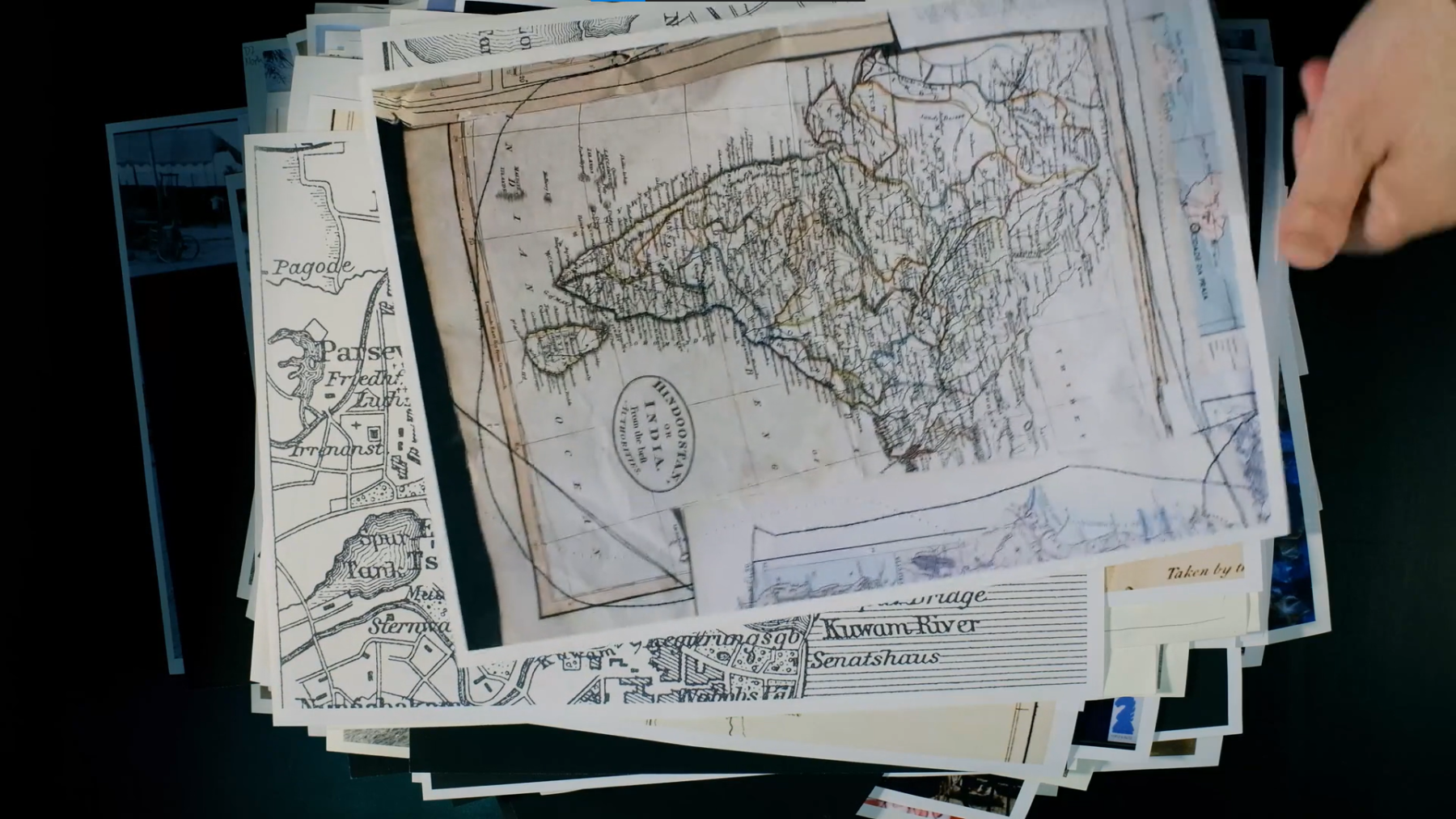
A colonial map of India as seen in the video work.
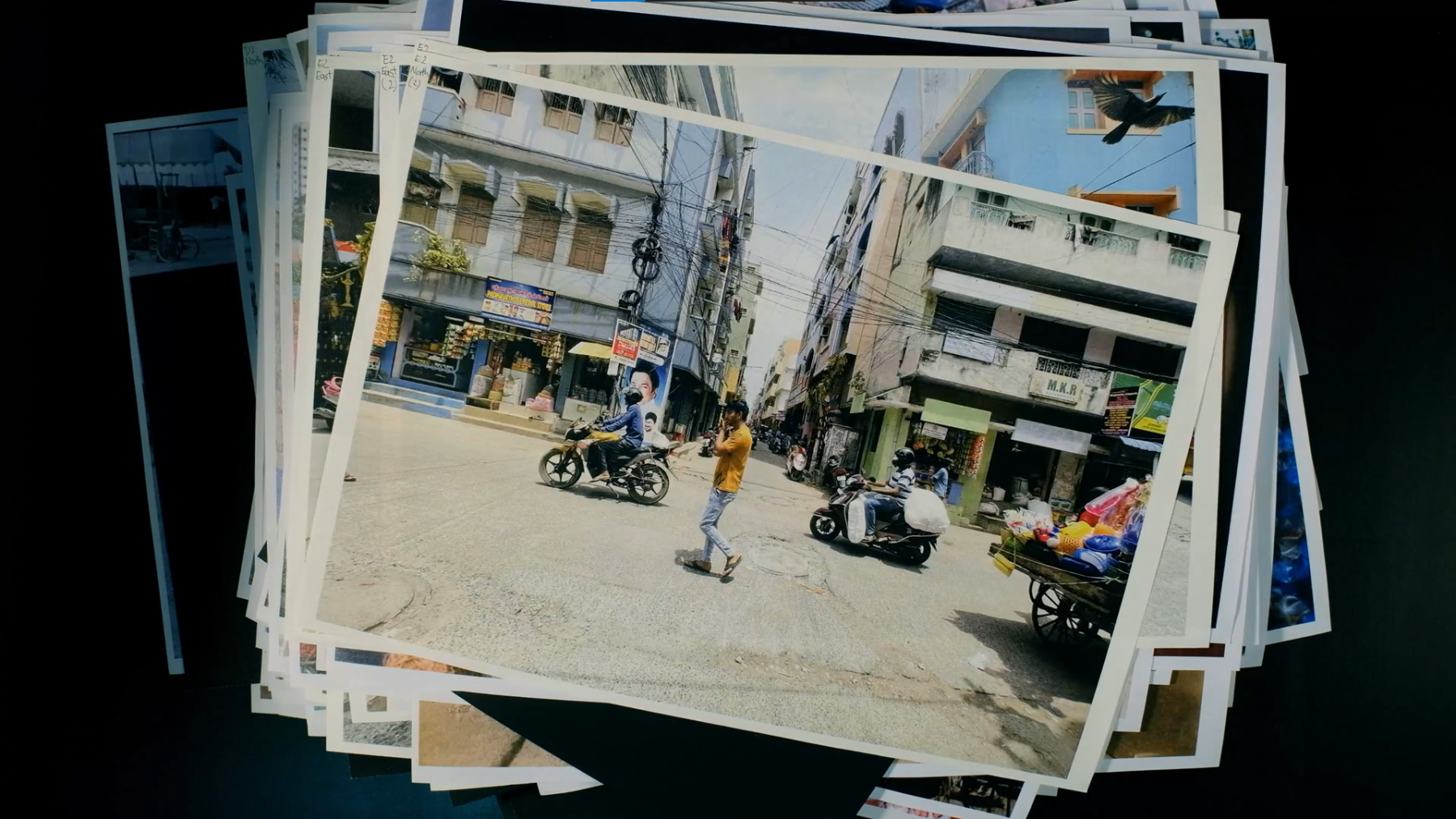
A photograph of a busy street in the city.
The video shows several images with rows of shipping containers and the port bays of Chennai to denote it as an industrialised trading centre, where hardware manufacturing takes precedence. Over the course of the video, infrastructures such as roads, highways and lanes are cited as constitutive of the city. We are then introduced to the idea that people make the city, as the video acquaints us to cultural touchpoints including the Tamil film and music industry and growing subcultures, amongst other things. The Indian Defence challenges the claim of India as a superpower, juxtaposing industrial development with the labour forces, exploitation, waste economy, and the effect of the climate crisis on the city.
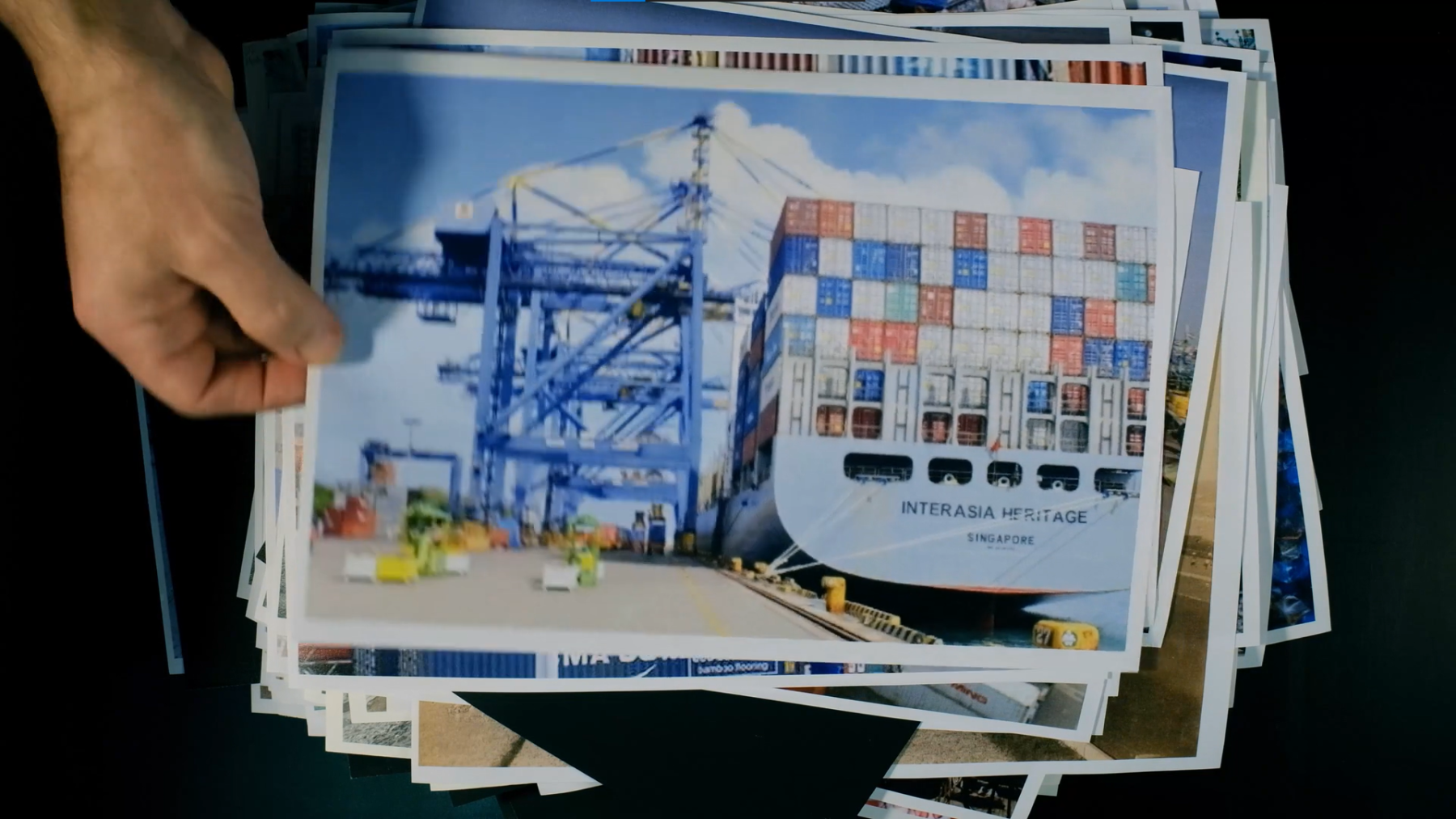
Shipping containers at Chennai Port.
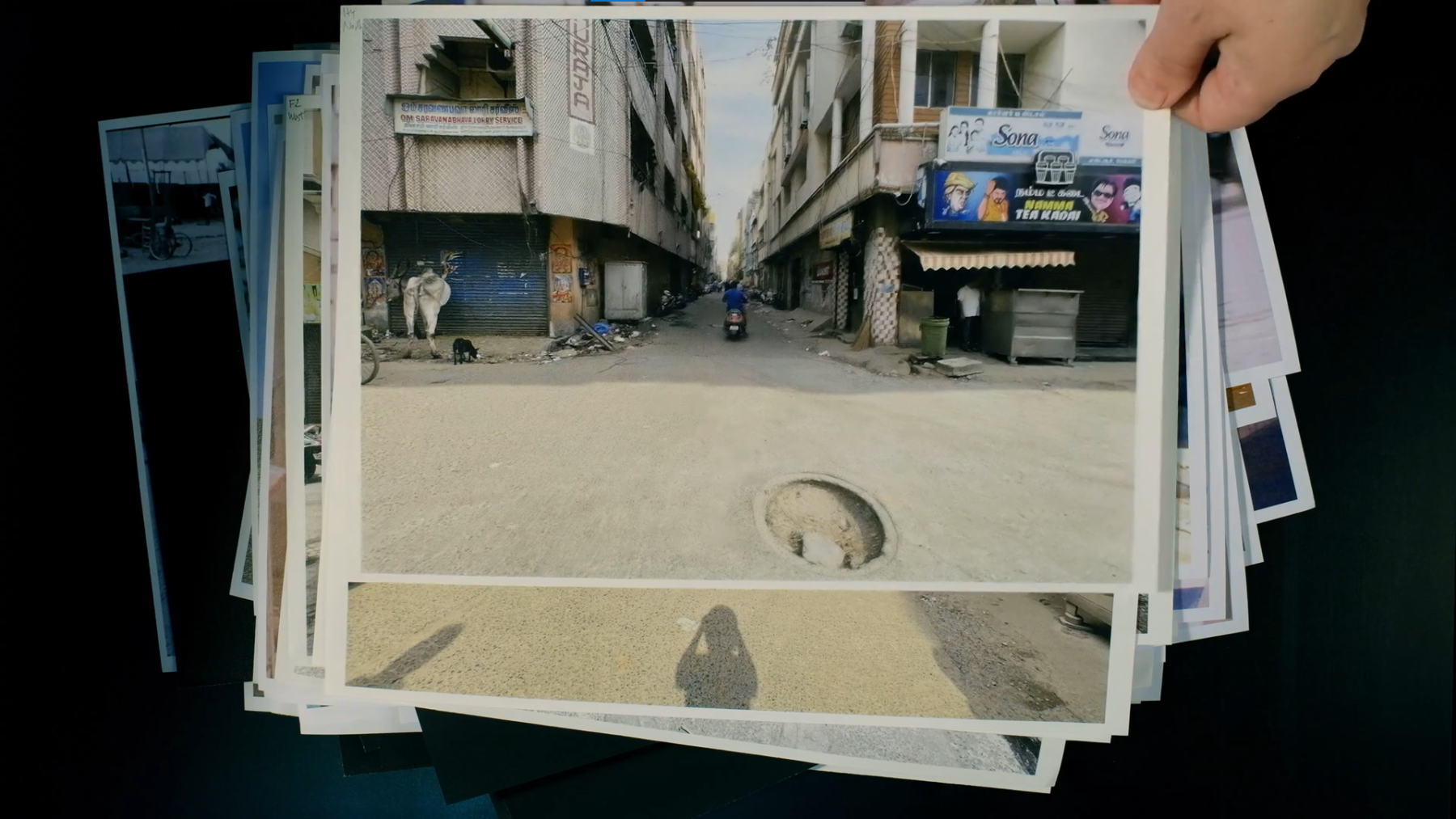
A photograph of an empty street, largely devoid of any people.
The artists themselves were unable to visit the Chennai Photo Biennale, hence they presented their work as found and collected images, many of them channelled through the Biennale team. How does one experience a city purely through images, and is that a complete iteration of the space? Or, more pervasively, can the image truly be representational? In tandem with these provocations, the narrator poses the question, “Who is in control of the images?”
The Indian Defence uses Chennai as a conduit for a larger conversation about representational quality and the experience of informational infrastructures that pervade our notions of any place. Through associations and juxtapositions, the work questions the very constitution of a video essay, and its ability to inform or manipulate the viewer. Much of the images in motion are of empty streets and spaces, which begs the question–where are the people?
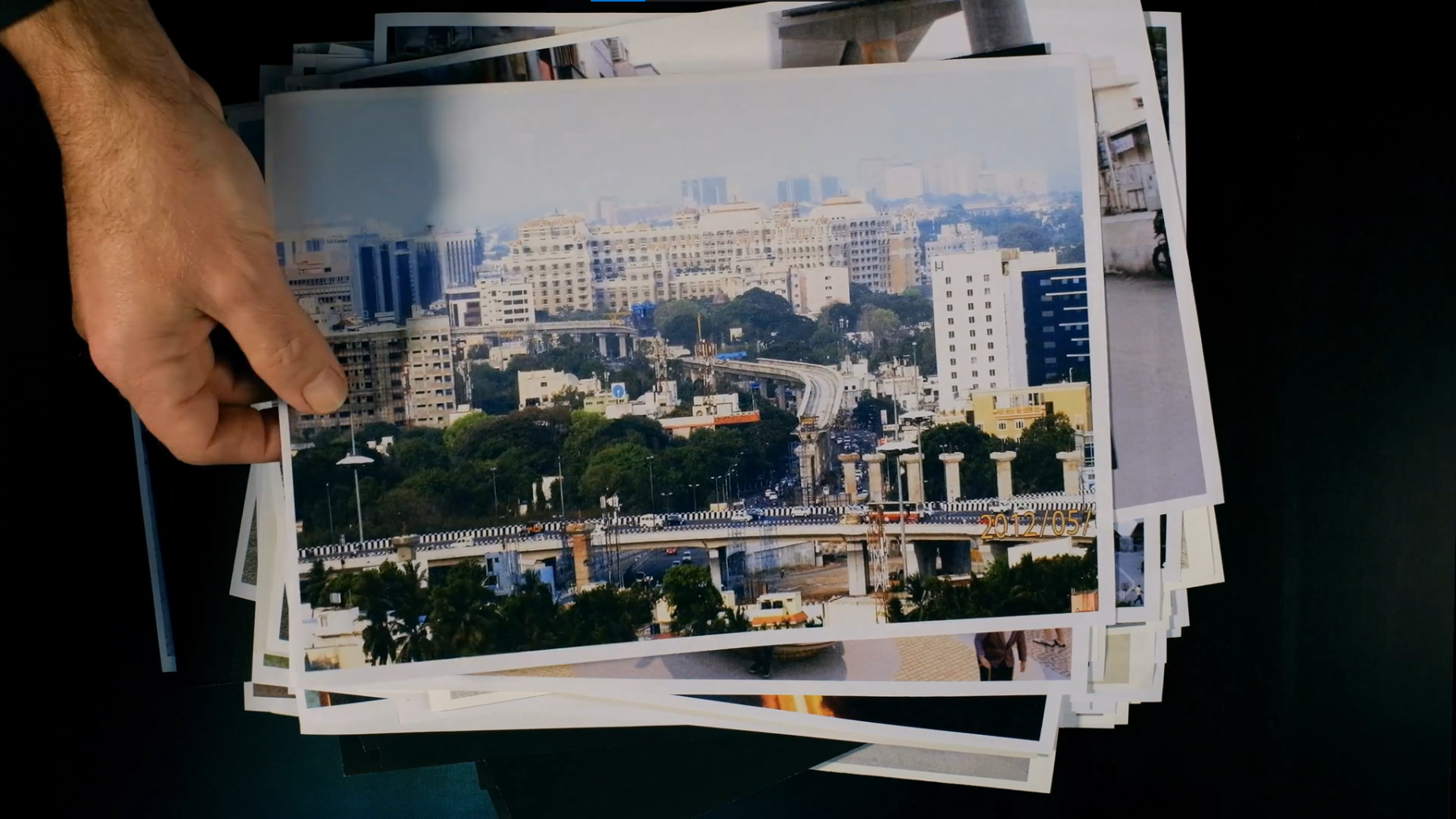
A wide angle view of the city skyline.
Another prescient question the narrator asks in the video, “Where would we feel comfortable?”. The answer lies entirely with the viewer than within the city, as what is described, understood, and even felt as “comfort”, lies within the viewer’s socio-economic, caste, political and cultural identities. The lens turns to the viewer, making it a pervasive act as the question remains unresolved. The work challenges the incomplete vision presented by the found images, and is anchored by the narratorial comment, “Every image is the tip of the iceberg”.
While the images bring some life to the city, they also remain unaffected by the contextual interplay between the viewer and the living city with its own set of structures, cultures, and spaces. Ultimately, the question that remains with us is, “How is a city read?”
To read more about the Chennai Biennale, click here, here and here.
All image stills from The Indian Defence (2021) by Katja Stuke and Oliver Sieber.




